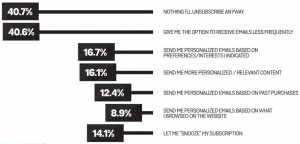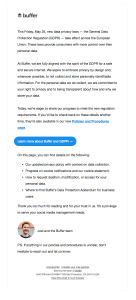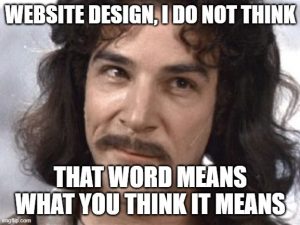Index:
- SEO and Your Inbound Marketing Strategy – Part 1
- SEO and Your Inbound Marketing Strategy – Part 2
- SEO and Your Inbound Marketing Strategy – Part 3
Optimizing Your Content and Social Media Efforts
Inbound experts agree that SEO is a vital component of the entire marketing process. In our last article we examined how to optimize your inbound program before you ever even write your first word.
Things like site organization, key word planning and creating buyer personas are all part of inbound and include SEO in order to work.
In this installment of SEO for inbound, we will be considering how SEO affects your inbound efforts once you start writing content for your website.
Your blog, your messages on social media and things like your landing pages and call-to-action pages each have a role in your inbound program and without SEO will not drive traffic to your site. In addition, let’s take an intense look at how SEO and your content process affects lead generation.
CONTENT MARKETING
An entire science has evolved around creating content within your inbound strategy. Good marketing skills involve creating content for your blog, as well as different content with special types of visuals and wording for an offer. Then there is action language that pulls a qualified lead through the conversion part of the funnel with a CTA or an email.
Content is what makes inbound exciting and captivating for both your visitor and search engines. It is where your company can begin to bring in and nurture leads to buy what you have sell.
Using keywords as well as a mixture of psychology and methodology for each stage of your buying process is what makes the heart of a marketing expert beat fast and furious. As we stated in our first article on SEO and inbound, there are several points of view on what makes up the lead nurturing process. For argument’s sake, we are going to begin with the offer.
The Offer
Considered the beginning of the buying process by many, the offer attracts a visitor to your website. Maybe they were brought to your site by an email promising a download, or a social media message promoting a checklist.
The offer must contain something of value and is different for each stage of the lead nurturing process.
Would you like to buy a widget?
TOP OF THE FUNNEL OFFERS
A first time visitor to your site who has been attracted there by your offer is usually in the research stage of the buying process. They are not ready to make a purchase. In fact, 98% of users who visit your site are never going to come back, much less give you their personal information.
The offer that a visitor receives at the top of the funnel should be mostly informational or educational, as well as concentrate on your industry as a whole. This is not a good time to point out the advantages of your product and price points.
For example, if you are selling widgets, a top of the funnel offer might be an educational white paper on how widgets are changing the way people do something. It could be a downloadable checklist of the top reasons why everyone needs a widget (not just your widget). Then there is the greatly loved eBook where you might segment the information you give based on where the visitor/lead is in the funnel.
You can also experiment with videos, free trials, discounts and newsletters. They all work, as long as the content is rich and has value.
I just saw a suggested post on Facebook about widgets.When I clicked on it, there was a cool offer; a checklist for organizing my Widgets.
When you are creating your offer think about what a potential visitor/buyer is thinking about when they are doing research on your widget and answer those questions for them in the top of the funnel offer. Use your keywords and action language that compel them.
The actual language you use varies. Unfortunately there isn’t a magic ball that will tell you exactly which words to use. This is where A/B testing comes in. Testing is a great way to identify which wording provides the most click-throughs for your offer.
MIDDLE OF THE FUNNEL OFFERS
A visitor who is in the middle of your funnel is most likely a qualified lead by now. They have given you some of their information (via the landing page that we will talk about later) or they have found your site using different key words that signal they are closer to making a buying decision.
There still needs to be lots of value with a middle of the funnel offer, however you can ask for a bit more information before you give it away too.
At this point in the buying process, a person is assessing the alternatives they have. They are gathering information about the solutions available for their type of problem. If they are on your website, then they are evaluating YOUR solution vs. your competitor’s. This is where the language you use in content gets a little more explanatory than educational.
The potential customer is thinking more about making a purchase. They have evaluated several options. They are ready to ask ask more distinctive questions.
There are a couple of widget-smiths in the area. I saw a conversation about it on Facebook. That widget organization list was helpful. I have room for another widget.
It is also where search terms get a little more involved.
Which widget has the best design?
How do widgets work?
Where do I get widgets in Inboundtown?
Payment plans on widgets?
Craft your blog, offer, landing page and social media plan around the questions your potential buyer is asking.
Using your SEO keywords, a middle of the funnel offer should explain the advantages of using your product. You can still use eBooks at this stage, or delve into the webinar. Actual case studies where your product or service has been used to great gain are a great way to convert middle of the funnel visitors as well. You might also consider an actual video of your product in action.
Once again, keywords and strong action language that is A/B tested is the way to get that “click” and secure more information on your lead.
BOTTOM OF THE FUNNEL OFFERS
The lead nurturing process is critical because most people who come to your website are not ready to make a buying decision. Regrettably, most businesses do not employ any type of lead nurturing process when it comes to inbound marketing. Even more alarming is that they don’t measure their results.
When you nurture leads with great SEO optimized content, and measure as they move through the funnel, you will have actual proof of what language works and what doesn’t, as well as a growing list of qualified leads to work with to grow and expand your business.
Bottom of the funnel leads are ready to buy. At this point they need reassurance and trust, as well as some pertinent information about your product.
I am going to buy a widget today. At lunch time, I am going to sit outside and order one from my phone.
Widget Price List
Widget Coupon
Widget Deals
These well-qualified leads need an offer that lets them know you are a trustworthy business, as well as things like
- Pricing Sheets
- Product Guidelines
- Business Cases
- Testimonials
- Company Awards and Recognition
The offer pages that you have on your website will be different, according to your visitors and where they are in the buying process. We also suggest having different offers geared to each buyer persona and each stage of the funnel. This is a great way to include evergreen offers on your website that visitors can always come to in the future.
Building offers takes time and practice, but the more offers a website has, the better chances you have of converting that visitor into a closed sale.
An offer can’t stand on its own though. It needs other pages on a website in order to exist, breathe and invite visitors in.
Read more on Business 2 Community
(579)









